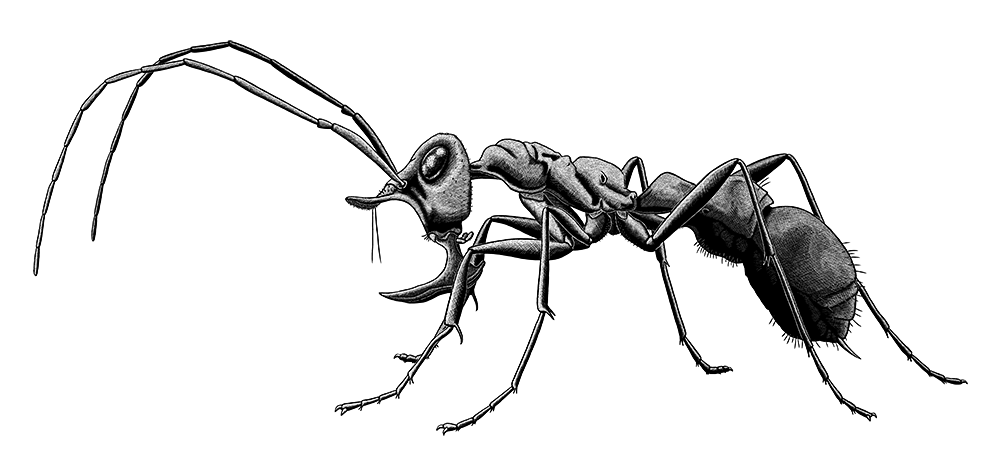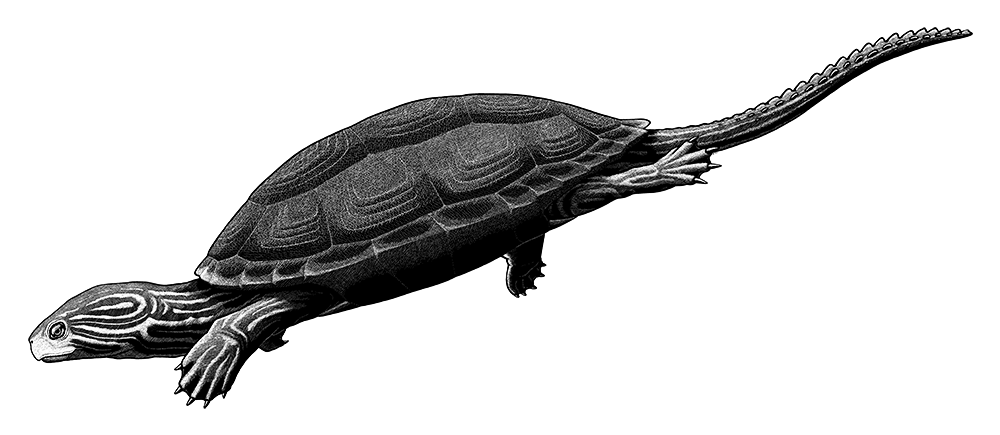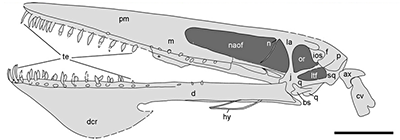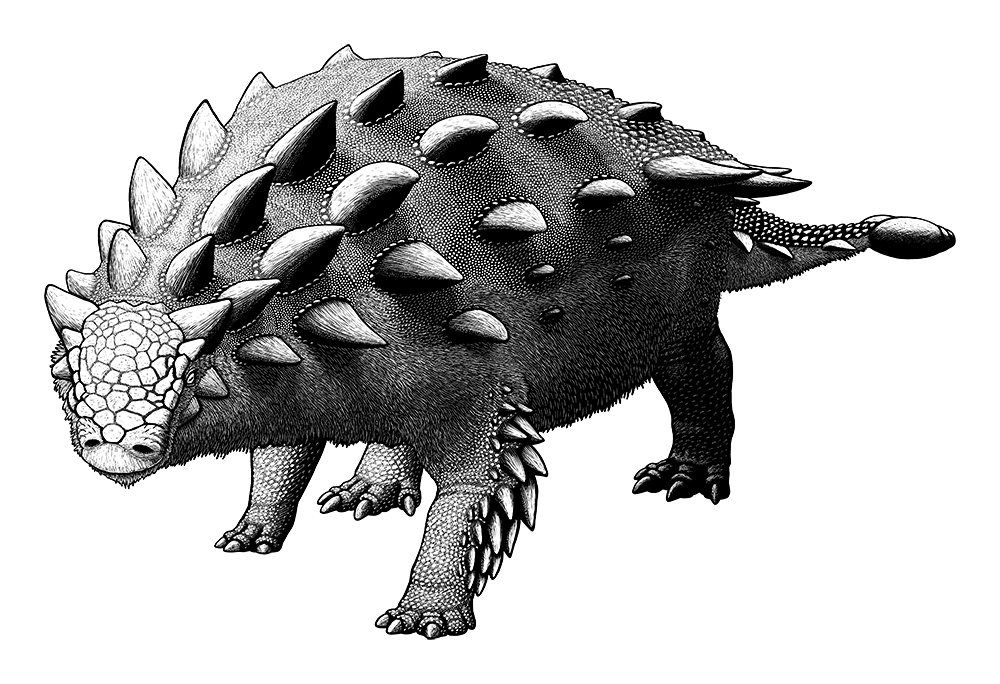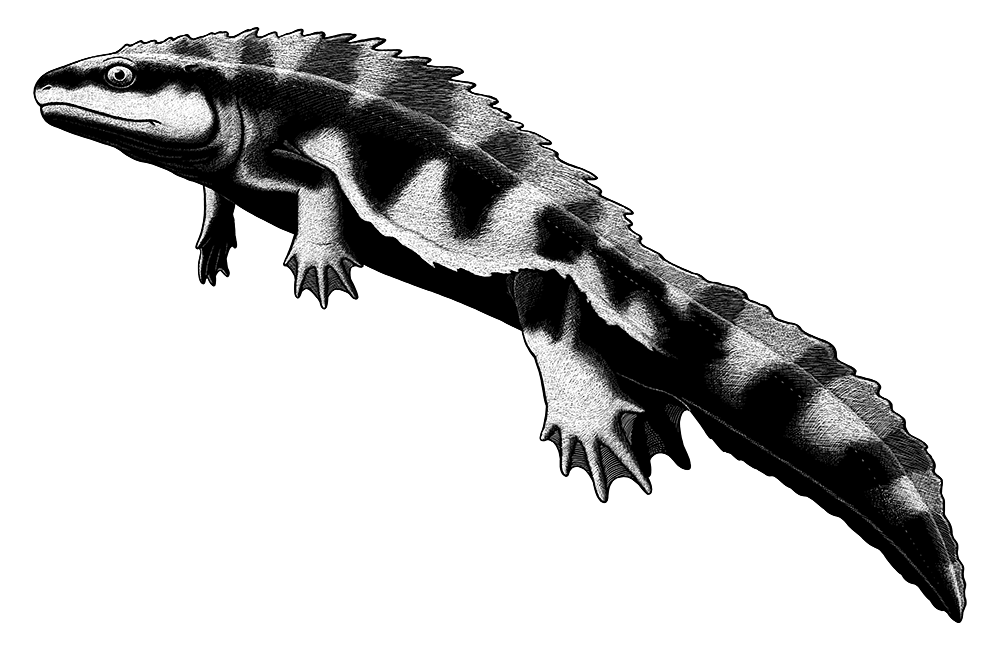Linguamyrmex vladi, an ant from the Late Cretaceous of Myanmar (~99 mya). Part of an extinct group known as the Haidomyrmecini, or “hell ants”, it measured about 5mm long (0.2″) and is known from several individuals in amber.
It had huge scythe-shaped mandibles and a horn-like appendage on its head which together formed a powerful trap-jaw mechanism, snapping vertically shut when a pair of long sensitive trigger hairs touched against a target. One specimen was preserved close to a large soft-bodied beetle larva, which may have been an intended prey item.
When closed, the mandibles formed a tube-like channel to Linguamyrmex’s mouth, allowing it to suck out the “blood” from its impaled victims – and inspiring its species name, referencing Vlad Dracula.
The horn was also reinforced with metal particles in the chitinous exoskeleton, strengthening it against the impact of its closing jaws.

